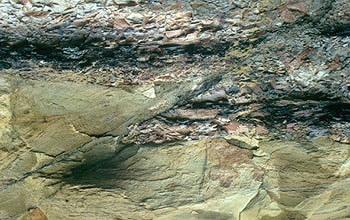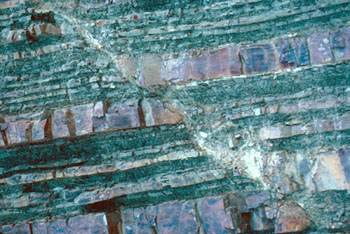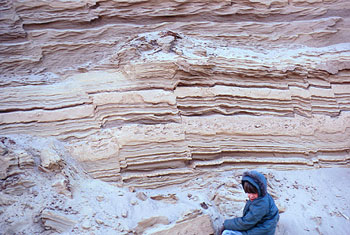Reverse Faults
| Remember: the block below a fault plane is the footwall; the block above is the hanging wall.
Reverse faults are exactly the opposite of normal faults. If the hanging wall rises relative to the footwall, you have a reverse fault. Reverse faults occur in areas undergoing compression (squishing). If you imagine undoing the motion of a reverse fault, you will undo the compression and thus lengthen the horizontal distance between two points on either side of the fault. |
|
If you stood on the fault plane, the block on the right would be under your feet. This is thus the footwall.
The tan sandstone has been pushed up and over itself. This offset of the hanging wall indicates that this is a reverse fault.
Photo: Norris W. Jones
|

|
|
The footwall is on the left. Since the beds indicate that the hanging wall has risen relative to the footwall, this is a reverse fault.
Photo: Norris W. Jones
|

|
|
The fault planes are nearly vertical, but they do tilt to the left. The centimeter-scale offsets indicate a series of steep reverse faults.
These are layers of sands laid down during the last ice ages and deformed by an advancing glacier.
Photo: ~5 miles west of Oskhosh, WI, by Norris W. Jones
|

|
|



